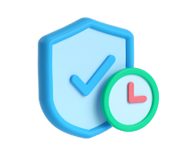 Negative ease is the key to making a well fit sock. When a garment has negative ease it is smaller than the wearer. There are two sock measurements to consider when evaluating the fit of your garment, according to Alice Yu, author of Socktopus.
Negative ease is the key to making a well fit sock. When a garment has negative ease it is smaller than the wearer. There are two sock measurements to consider when evaluating the fit of your garment, according to Alice Yu, author of Socktopus.
- Foot Circumference
- Foot Length

Interweave: Must Know Sock Knitting Technique: How a sock is supposed to fit.
The Spruce: Sock knitting Terms
The Craft Yarn Council: Foot Size Chart
Anatomy of a Sock
Let's also get some sock terms out of the way so everyone is referencing the same vocabulary. Cuff: The cuff is often where you work most of your ribbing. It helps keep the sock up on your ankle. Leg: The leg is the easiest part of the sock you can customize and the stitches match the foot. Heel: There are books and books written about different types of heels. There are some great ways to customize your work by customizing the heel. For our patterns we will be working in some different techniques but here are some great resources on customizing your heel. Gusset: This is generally the largest part of your foot. This is where you will pick up stitches after you turn the heel and depending on your foot shape, do a lot of future customizations. Foot: The foot usually the same number of stitches as the leg. This is one of few times you won’t necessarily have to increase or decrease. Sole: If you wanted to make adjustments for a high bridge or for the instep this is where you would do so. Toe: The finale or beginning if you are doing toe-up and if it’s your finale then you just have a little more shaping to do.
Cuff: The cuff is often where you work most of your ribbing. It helps keep the sock up on your ankle. Leg: The leg is the easiest part of the sock you can customize and the stitches match the foot. Heel: There are books and books written about different types of heels. There are some great ways to customize your work by customizing the heel. For our patterns we will be working in some different techniques but here are some great resources on customizing your heel. Gusset: This is generally the largest part of your foot. This is where you will pick up stitches after you turn the heel and depending on your foot shape, do a lot of future customizations. Foot: The foot usually the same number of stitches as the leg. This is one of few times you won’t necessarily have to increase or decrease. Sole: If you wanted to make adjustments for a high bridge or for the instep this is where you would do so. Toe: The finale or beginning if you are doing toe-up and if it’s your finale then you just have a little more shaping to do.  Next week we start our Pedicure Sock the free pattern is located here. Most socks take about 10 hours or less to knit which is why they are considered a quick project. If you have questions or would like to see something specific let us know and we will do our best to show it to you. Don't forget to show us your Socks that you have knitted and the Socks you are donating to enter in our Socktoberfest Challenge. We encourage everyone to donate socks to your local shelter as they are highly requested items. If you're looking for yarn options with built-in patterns, check out this sock yarn by Patons. Also, follow us on Facebook and Pinterest for more inspiring project ideas!
Next week we start our Pedicure Sock the free pattern is located here. Most socks take about 10 hours or less to knit which is why they are considered a quick project. If you have questions or would like to see something specific let us know and we will do our best to show it to you. Don't forget to show us your Socks that you have knitted and the Socks you are donating to enter in our Socktoberfest Challenge. We encourage everyone to donate socks to your local shelter as they are highly requested items. If you're looking for yarn options with built-in patterns, check out this sock yarn by Patons. Also, follow us on Facebook and Pinterest for more inspiring project ideas!


